7 Days of awesome at-home workouts and delicious dinner recipes – delivered daily right to your inbox!
Sign up for our all-now “7-Day Home Workout and Recipe Plan” by clicking RIGHT HERE!
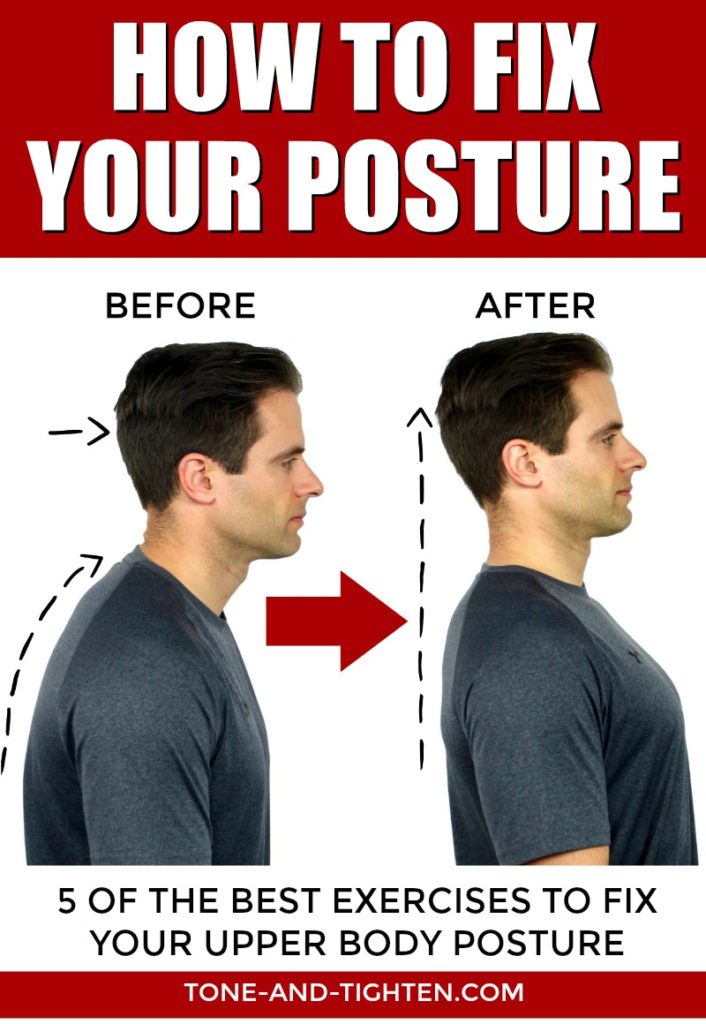
“Sit up straight.“
“Don’t slouch.“
“Stand up tall.“
Believe it or not – your mother knew exactly what she was talking about!
As a physical therapist, I treat many posture related problems.
The thing is – people don’t come in to my clinic complaining of “bad posture“. People come into my clinic complaining of the symptoms that are typically associated with bad posture. Neck pain, knots in your upper shoulders, headache pain, etc. are typically related to poor posture.
These are the complaints for which people typically seek Physical Therapy help; little do these patients know how many of them wouldn’t be in any pain if they just spent some time addressing their posture!
Today on Tone and Tighten I wanted to discuss these postural issues – specifically what is poor posture, why you developed it, and some simple exercises you can do to correct this problem.
Keep reading for more!
What is it?
Poor posture is typically characterized by what we refer to as a “forward head and rounded shoulders“ posture. When you stand up straight and tall, if I were to look at your profile from the side your ear should be directly located over the tip of your shoulder. Your sternum/chest should be pointed up with your shoulder blades sent back. This is what “good“ posture looks like.
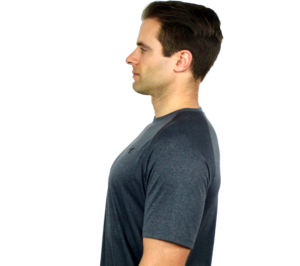
In this position, gravity holds your head squarely on top your neck with very minimal muscle activation required. This results in minimal tension, decreased muscle knots, and decreased muscle activation.
Now let’s take a look at the implications of bad posture…
Again, bad posture is typically characterized by a “forward head and rounded shoulders“. Forward head refers to the position of your head relative to your shoulders. It simply means that if I were to look at your standing posture from the profile view your ear would be out in front of the tip of your shoulder.
This typically causes a “rounding“ forward of the shoulder blades and an increased visible “hump“ in the upper back.
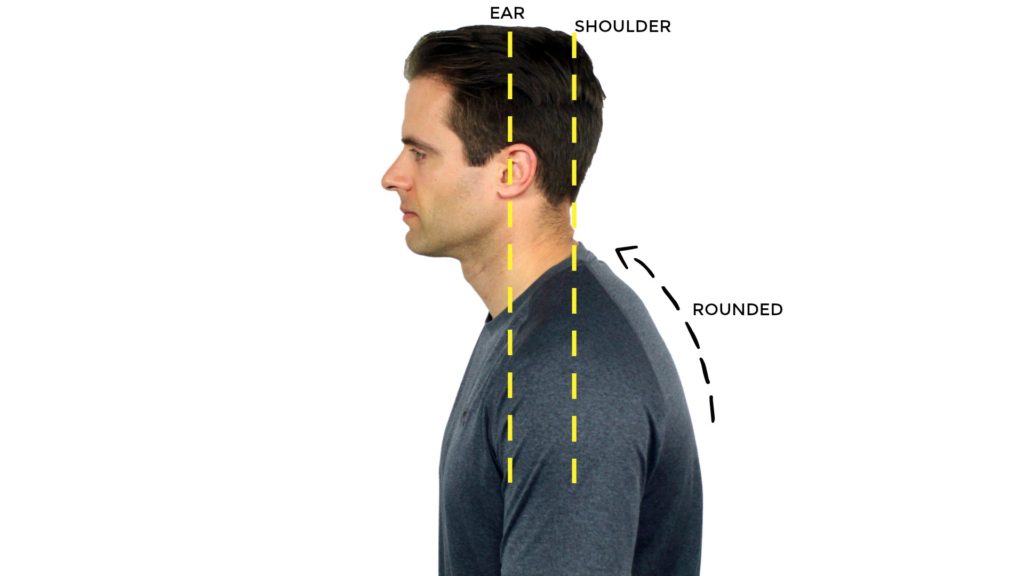
In this position, your head is not in an ideal anatomical location. Gravity would cause it to flop forward if not for some muscle activation to hold it up. So to prevent your head from flopping forward you must activate the muscles in your neck and upper shoulders.
15–30 minutes at a time this might be OK, but when you spend 8 – 12 – 16 hours in this position, those muscles can get extremely fatigued.
The result is increased tension in your neck, pain with movement, stiffness, knots in your upper shoulders, and even headaches.
So what do we do about it?
The muscles in your body are highly adaptable to stresses placed on them or removed from them.
Our forward head and rounded shoulders posture typically results in what we refer to as an “upper cross syndrome“. The muscles through the front of your chest and back of your neck get tight while the muscles through your upper back and front of your neck get stretched out and week.
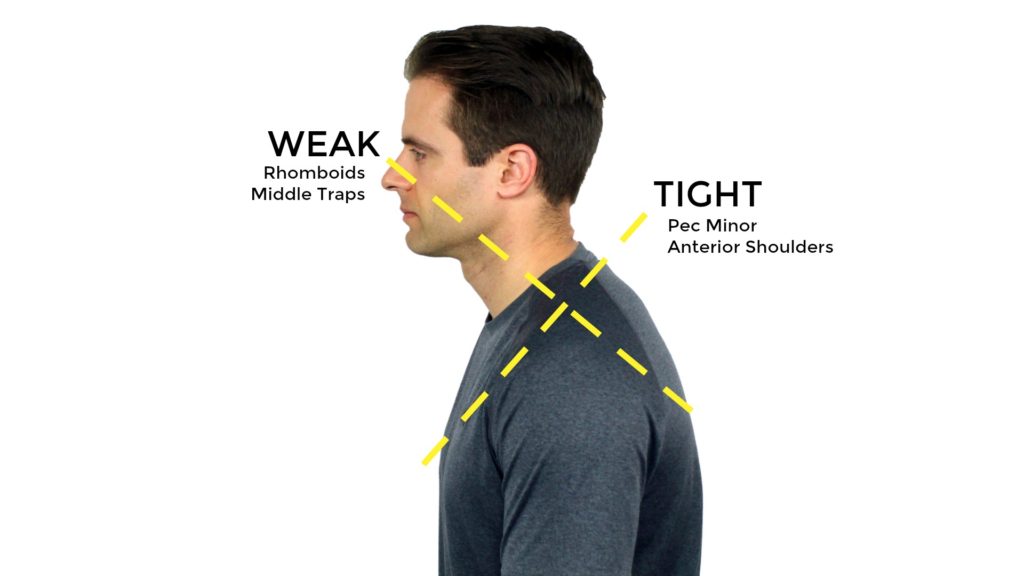
The treatment for this poor posture issue is to basically reverse our “upper cross syndrome“. We need to stretch where it’s tight (upper chest, front of the shoulders, and neck) and strengthen where it’s weak (rhomboids and middle traps – between your shoulder blades).
Here are 5 of my favorite exercises to help you overcome these problems. Push “Play” on the video below for a detailed description of the principles discussed in this post including an explanation of the following exercises.
Description of exercises
STRETCHES
Foam roll overhead:
- Lay down the length of your spine on a 36 inch foam roller. (Don’t have a foam roller? Click on this link to be taken to my favorite one)
- Stretch a towel between your hands. Start with a towel down at your hips, keep your elbow straight, and bring the towel up and over your head.
- Try to stretch as much as possible and get your hands as close to the floor as you can. You should fill a stretch through the front of your chest and shoulders.
- Hold for about 10 seconds and then return to the starting position. Perform this exercise for two minutes.
Foam roll angels:
- While still laying on your foam roller, put your hands to your side on the floor with your palms up.
- Perform a “snow angel“ motion by bringing your hands up in over your head.
- Your knuckles should stay in contact with the ground floor as much of this exercise as possible.
- Again, the goal is to feel the stretch through the front of your chest and shoulders.
- Hold over your head for 5–10 seconds and then slowly return to the starting position. Perform for two minutes.
Doorway Stretches:
- Place your hands high on either side of a door frame.
- Put one foot out front into the doorway
- While maintaining good posture, put your weight onto the front foot until a stretch is felt across the front of your chest and shoulders
- Hold for 20 seconds and then return to the starting position.
- Repeat with your hands at shoulder height and again with your hands at waist height.
STRENGTHENING
Wall Angels
- Lean against a wall. Your feet should be about 6″ from the wall, but your butt, shoulder blades, and the back of your head should be in contact with the wall.
- Bring your bent arms out to the side and bring your knuckles to the wall.
- Maintain your knuckles in contact with the wall while sliding your hand up and over your head.
- Return to the starting position. That counts as one rep.
- Shoot for about 30 reps or about 2 minutes of “wall angels”.
Prone Lat Pull Down
- Lay on your stomach with your arms out overhead.
- Lift your chest up off the floor.
- Pull your arms down to your sides. Your elbows should bend and be pulled a little behind you. (I tell patients make a big “W” with your arms)
- Slowly return to starting position. That counts as one rep.
- Shoot for about 30 reps or about 2 minutes of these “lat pull downs”.
BONUS Exercises
- Really – anything you do where your strengthening your back would be indicated to fix this problem.
- Emphasize squeezing your shoulder blades together and try to keep your shoulder down in a relaxed position (i.e. “keep your shoulders out of your ears” while rowing)
- 3 sets of 10 rowing and lat pull downs are great numbers to shoot for.
Remember – oftentimes you don’t feel “poor posture”… but you certainly feel the effects from it. If you carry a large amount of tension in your neck and shoulders, get neck pain regularly, or experience tension headaches – your posture certainly could be playing a role in that.
Performing these exercises regularly will help to improve your posture. In fact many of my patients notice a significant improvement in about a month; it might be up to 3 months to see a remarkable improvement (it took your body a long time to develop poor posture; it’s going to take some time and effort to reverse this problem). You have to be diligent and consistent, but I know these can help you out!
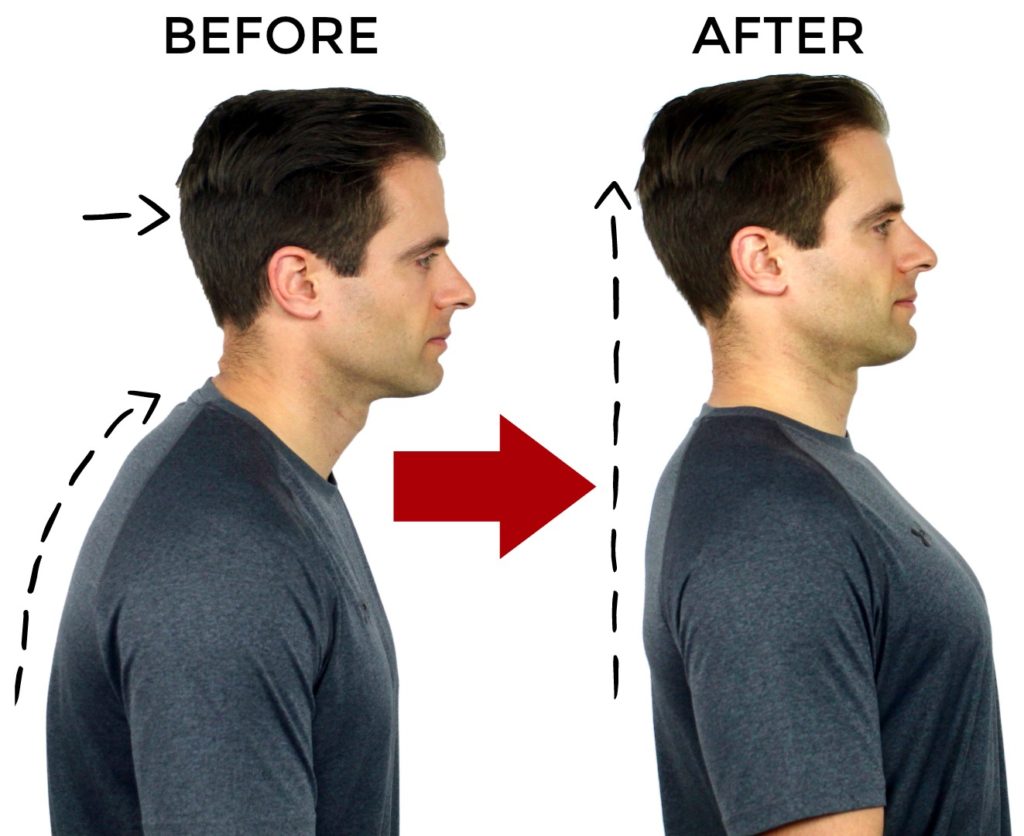
If you have any questions about any of the content shared below please leave them in a comment below; I’m happy to get to them as soon as I can.
Until next time…
Make it happen,
Jared
Disclaimer: The information presented in this post is designed to be used for informational purposes only. The diagnoses and treatment plans outlined are extremely generalized and may or may not be the recommended interventions for your specific problem. If you are experiencing pain, you are encouraged to consult a healthcare provider to determine the best treatment plan that will be in your best interest individual. Tone and Tighten claims exemption from accident, injury, or perpetuation of any injury incurred while performing exercises found on this website. The user assumes all risk … and reward !!
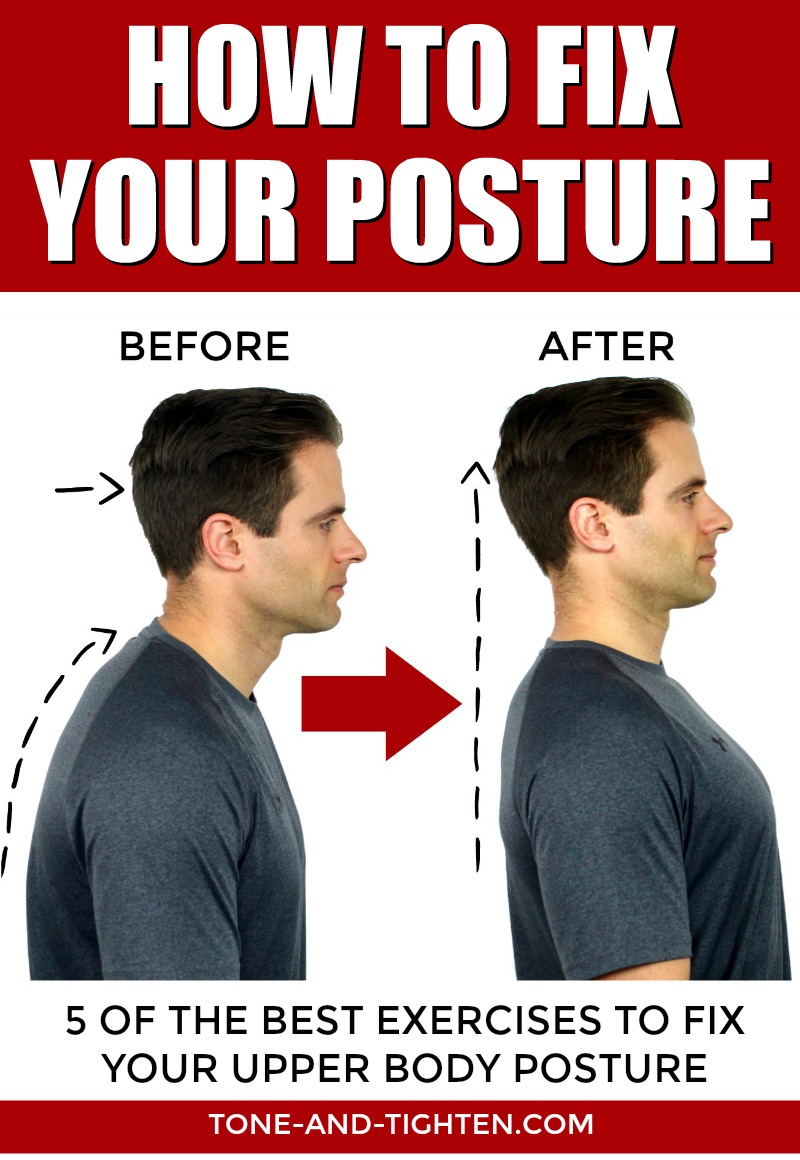

Thanks for the great info. This will really help.
Haha! I hope so! We still need to talk more; sorry our conversation was so short last time!
Good.
Thanks Praneeth! Glad you found it!